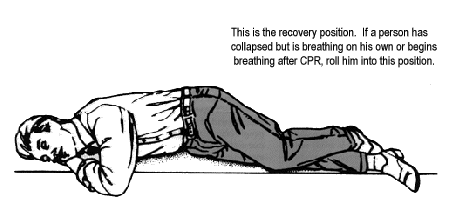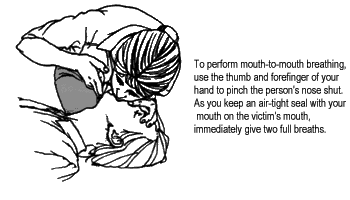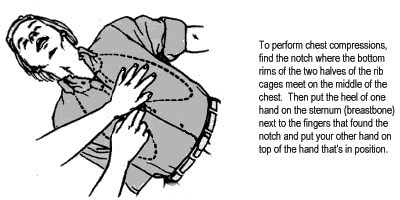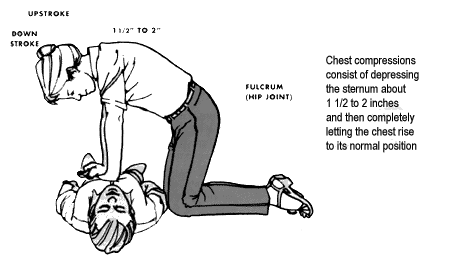Millions of Americans die suddenly each year when both their breathing and pulse stop. Sudden death has many possible causes–heart attack, poisoning, drowning–but it only has one solution: immediate restoration of oxygen-rich blood flow to the brain and other vital organs. Yet any one of us can breathe the life back into a sudden death victim. That is, anyone who knows how to perform cardiopulmonary resuscitation (CPR).
The following instructions from the American Heart Association (AHA) can help you learn how to resuscitate an adult (CPR for children under eight differs slightly because of their size). Ideally, you should take a course in CPR with trained instructors so that you can rehearse your technique on a mannequin (practicing CPR on a conscious, healthy person can be dangerous). To find out about a course near you, call your local American Red Cross chapter or AHA (800-242-8721).
The ABCs of CPR
Airway. Make sure the airway is open by positioning the person’s head properly. This is accomplished by tilting the head back and moving the chin forward.
Breathing. When breathing stops, cardiac arrest and death quickly follow. The quickest way to get oxygen into the victim’s lungs is with mouth-to-mouth rescue breathing, which should be performed until breathing resumes or until medical help arrives.
Circulation. If the person’s heart is not beating, you should perform rescue breathing plus chest compressions, which can maintain some blood flow to the lungs, brain, coronary arteries, and other major organs.
1) Assessment. To determine if a person is unconscious and might require CPR, check his responsiveness. Tap or gently shake the shoulder of the person who has collapsed. Shout, “Are you OK?”
2) Call 911. If you don’t get a response, call 911 or your local emergency number before starting CPR.
3) Position victim. To open the person’s airway, turn him on his back, supporting the head and neck. Lift the chin up gently with one hand while pushing down on the forehead with the other to tilt the head back.
4) Check for breath. Look at the chest for movement. Listen for the sounds of breathing. Feel for breath on your cheek. If the person is breathing, roll him onto his side, using the arm and leg for support. This is known as the recovery position.

If the person isn’t breathing, pinch his nostrils closed. Make a tight seal around his mouth with your own. Give 2 slow breaths (1 1/2 to 2 seconds per breaths). Watch for the chest to rise. Allow the lungs to deflate between breaths.

5) Is there a pulse? Place two or three fingers on the Adam’s apple (voice box) then slide them between the Adam’s apple and muscle. If you feel a pulse, perform rescue breathing. Provide about 12 breaths per minute (1 breath every 5 seconds).
If there is no pulse, combine chest compressions (see below) with rescue breathing.
Chest Compressions: Kneel beside the person’s chest. With the middle and index fingers of your hand nearest the person’s legs, find the notch where the bottom rims of the two halves of the rib cage meet in the middle of the chest.

Now put the heel of one hand on the breastbone next to the fingers that found the notch. Put your other hand on top of the hand that’s in position. Be sure to keep your fingers up off the chest wall (interlocking your fingers may help). Bring your shoulders directly over the victim’s sternum and press down, keeping your arms straight. With an adult, depress the sternum about 1 1/2 to 2 inches.

Then completely relax the pressure on the sternum. Don’t remove your hands, but do let the chest rise to its normal position between compressions. Relaxation and compression should take equal amounts of time at a rate of 80 to 100 compressions per minute. Count to establish a rhythm: “one and, two and, three and, four and…”
Until Help Arrives: After every 15 compressions, deliver 2 slow rescue breaths. After 4 such cycles, check pulse. If there is no pulse, resume CPR, starting with chest compressions. If there is a pulse but no breathing, give 1 rescue breath every 5 seconds. If the victim resumes breathing and regains a pulse during or following resuscitation, place him in the recovery position.




